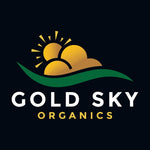Understanding the differences between living soil and traditional soil is vital for gardeners and farmers alike. This blog post aims to illuminate these differences, giving you a comprehensive analysis of the pros and cons of each.
What is Living Soil?
Living soil is a term used to describe soil that is teeming with life, including microorganisms, worms, and other soil fauna. Gold Sky Organics Premium Organic Living Soil takes this concept a step further with a blend of over 15 premium organic amendments, offering a complete ecosystem in a bag.
What is Traditional Soil?
Traditional soil, often referred to as garden soil, is generally less enriched than living soil. It doesn't have the same level of biological activity, which means it may require additional amendments to provide plants with necessary nutrients.
Pros and Cons of Living Soil
Living soil offers a wealth of benefits, including improved plant health, nutrient availability, and water retention. Its main drawback is its cost, which can be higher than traditional soil. However, with a product like Gold Sky Organics Premium Organic Living Soil, the benefits far outweigh the cost, making it a wise investment for serious growers.
Pros and Cons of Traditional Soil
While traditional soil can be more affordable than living soil, it often requires additional inputs like fertilizers and pesticides to achieve the same level of plant productivity. This not only increases overall costs but can also lead to soil degradation over time.
Conclusion
While both living soil and traditional soil have their place in gardening and farming, living soil's rich biodiversity and self-sustaining nature make it an appealing choice for those seeking sustainable and high-performing solutions. Gold Sky Organics Premium Organic Living Soil exemplifies these qualities, providing a top-tier option for indoor growers and high-performance plant enthusiasts.
